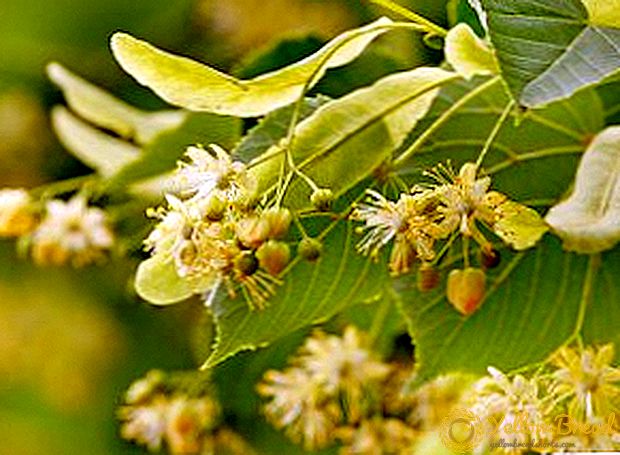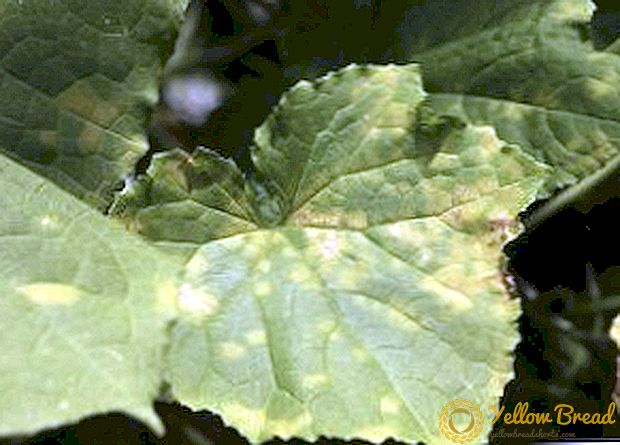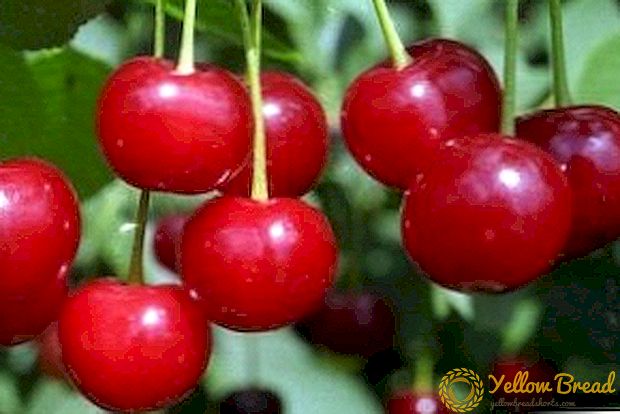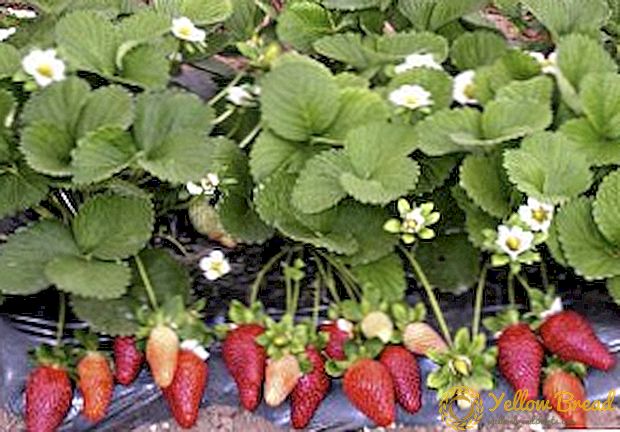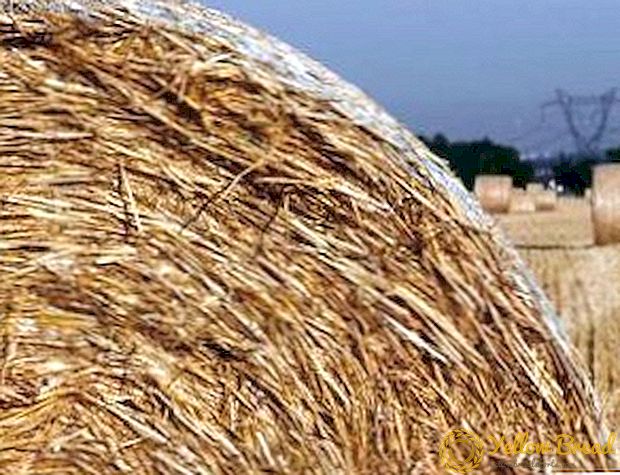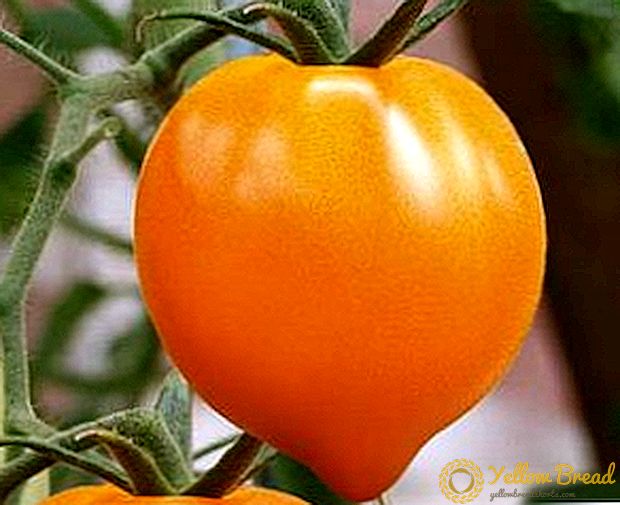
Tomatoes of unusual colors and shapes are a real decoration of the beds and greenhouses. One of the brightest representatives of the original varieties - Tomato Golden Heart.
Bright orange heart-shaped tomatoes are different. high tasteThey are suitable for baby food and decoration of dishes.
Tomato Golden Heart characteristic and description of the variety
Golden Heart is an early ripe high-yielding variety. 
The bush is determinant, not more than 1 m in height, perfectly foliated.
The leaf is small, dark green, simple. In greenhouse conditions, the bushes are longer, they are more compact in open beds.
On the brush matures 5-7 tomatoes, fructification last throughout the summer season. From 1 square. m planting can be collected up to 7 kg of selected tomatoes.
Fruits are oval, heart-shaped, with a pointed tip and a weakly pronounced ribbing in the stem. The weight is average, from 120 to 200 g. The tomatoes have a rich orange color, the skin is thin, but dense, glossy.
Delicious taste, rich and sweet, without excess acid or wateriness. The pulp is juicy, fleshy, low seed. High content of sugars and beta-carotene makes fruit ideal for baby and diet food.
Origin and Application
The variety of the Russian selection, is suitable for cultivation in an open ground, film shelters, the glazed greenhouses. Tomato variety Golden Heart successfully planted in different regions, except the north.
Collected fruits perfectly storedtransportation is possible. Tomatoes do not crack, while maintaining an excellent appearance. Collected green, they successfully ripen at room temperature.
Fruits of the Golden Heart variety suitable for canning: pickling, pickles, cooking vegetable platter. Tomatoes are used for salads, podkarnirovki, soups.
The unusual orange color of the pulp makes the dishes especially elegant. Overripe tomatoes make a delicious and sweet thick juice, rich in vitamins.
Advantages and disadvantages
Among main advantages it is worth noting:
- high taste of fruits;
- attractive appearance;
- abundance of beneficial trace elements in the fruit;
- universality of tomatoes, they can be eaten fresh, canned, widely used in cooking;
- excellent yield;
- resistance to late blight, fusarium, and other diseases of the nightshade;
- cold endurance, drought resistance;
- compact bush saves space on the garden.
Among the difficulties of the Golden Heart variety is the need to form a bush and high demanding of tomatoes to the nutritional value of the soil and watering schedule. The more care for the bush, the higher the yield and larger the fruit.
A photo
See below: Tomato Golden Heart photo




Features of growing
Sowing seeds for seedlings takes place in March and early April. Before landing seeds must be disinfected. They are soaked in a pink solution of potassium permanganate or hydrogen peroxide, dried, and then treated with a growth stimulator or freshly squeezed aloe juice.
Another suitable mixture is turf and peat mixed with washed river sand. Soil sown before plantingand then ignited for complete disinfection.
Seeds are sown with a depth of 1.5-2 cm, powdered with an even layer of peat, sprayed with warm water. For successful germination, planting is covered with a film, placing the container in heat.
The optimum temperature is 22-24 degrees. After the emergence of shoots, the film must be removed and the containers moved to light, closer to the sun or fluorescent lamps. Properly formed shoots must be strong, bright green, not too stretched.
Sprout dive held after the formation of the first of these sheets. Plantings are then fertilized with nitrogen-containing complexes that form a sheet mass.
Landing in the ground begins in mid-May. The soil can be shed with hot water, and then a mixture of superphosphate with wood ash (1 tbsp per bush) can be expanded in the wells. On 1 square. m can accommodate no more than 3 plants.
During the season, plants are fed 3-4 times with complex mineral fertilizer.Watering tomatoes need warm settled water, cold can cause a massive discharge of ovaries. Between irrigation, topsoil should be slightly dry.
It is important to loosen the land between the plants and promptly weed out weeds. To maintain a normal level of moisture will help mulching the soil with straw, peat or humus.
Pests and Diseases: Control and Prevention
 Tomato Variety Golden Heart not too sensitive to diseasesbut preventive measures need to be taken. To begin with the treatment of the soil. In the greenhouse, topsoil is replaced annually.
Tomato Variety Golden Heart not too sensitive to diseasesbut preventive measures need to be taken. To begin with the treatment of the soil. In the greenhouse, topsoil is replaced annually.
If seedlings are transplanted to open beds, it is important to choose areas that were previously occupied by legumes, cabbage, carrots, or spicy herbs.
Do not use the land on which grew other varieties of tomatoes, potatoes, peppers, eggplant. For the prevention of soil spilled with a solution of potassium permanganate or copper sulphate.
From late blight and fusarium wilt help regular spraying plantings with copper preparations. To get rid of the fungus, you can use a pale pink solution of potassium permanganate.
Having found darkening or twisting of leaves, it is necessary to remove the affected parts of plants in a timely manner, and then spray plantings with phytosporin or other non-toxic bio-preparation.
Insects cause great harm to plantings. Tomatoes are threatened by aphids, thrips, whitefly, spider mites. In the beds, young plants await naked slugs, destroying fresh greens.
Spraying of landings will help to get rid of them. aqueous solution of ammonia. Soapy water saves from aphids, modern insecticides or broth of celandine kill the mite.
As for the Colorado potato beetle, you can use chemicals to combat it: Aktara, Corado, Regent, Commodore, Prestige, Lightning, Tanrek, Apache, Taboo.
Golden heart - fine grade for experienced and novice gardeners. With proper care, he will not disappoint, providing excellent yields throughout the summer. Tomatoes practically do not get sick, they can give seed material for subsequent plantings.

